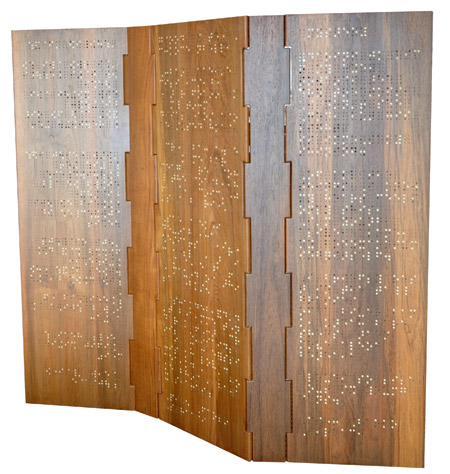FOLDABLE SCREENS
Foldable screens travel from China to the West and then to India through well-established trade routes in the late 19th century. Craftsmen are quick to adapt this furniture to local production techniques – and as early as 1904, at the Indian Art Exhibition in Delhi, exquisite pieces from various parts of the country will be exhibited. Owing to its versatility, these screens will become immensely popular in all Indian homes, wealthy and humble alike. And even in the next century, designers will continue to experiment with its form ensuring that screens find renewed meaning as objects of décor.
The custom-made Pasolini Screen substitutes the restrictive hinges of traditional screens. The new wooden panel – with hand-drilled holes along the edges and dowels introduced within – allow for the screen to turn 180 degrees.
A Braille pattern is used as an underlying graphic to craft the screen. Over 1,00,000 holes are hand-drilled into the 1” thick panels (along the Braille pattern), with a variation of small 1/16th” and 1/4th” holes, in keeping with the Braille text.
The craftsmen then inlay a lighter coloured wood into the smaller holes – breaking away from the conventional inlaid patterns they are accustomed to. The added challenge is to create a double-sided inlay. The wood-work for this piece took 750 hours of manual labour.



PASOLINI SCREEN BY ROOSHAD SHROFF
MATERIAL: Recycled Burma Teak Wood
YEAR: 2012
MATERIAL: Recycled Burma Teak Wood
YEAR: 2012

